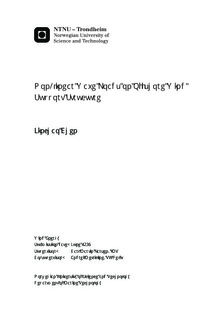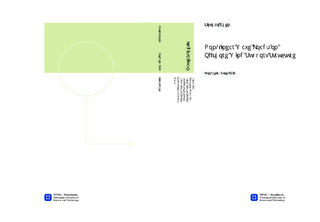| dc.description.abstract | Offshore wind development is constrained by its high cost. One potential way to meet this challenge is to reduce the uncertainty in wave modeling and hydrodynamic loads calculation for offshore wind support structures design. The thesis covers two aspects for calculating loads acting on a offshore wind support structure: an improved hydrodynamic load model and a modified higher order wave model.In studying hydrodynamic load model, FNV and Rainey s methods, both intended to explain third order phenomena observed on offshore slender structure, are compared and analyzed to solve the surface piercing problem, critical for a slender structure at an extreme sea state. Rainey s new equation is preferred over FNV.Second order irregular wave model, a simple higher order stochastic wave model, enables it to include non-linear contributions from waves. Analysis focuses on how the modified wave model affects wave surface elevation, wave power spectrum and wave kinematics.With improved hydrodynamic load model and wave model introduced, there are in total six methods available to calculate the loads acting on a slender offshore wind support structure. The proposed six methods are invstigated by comparing load statistics and corresponding power spectrum of shear force and bending moment at foundation base. The implementation of non-linear models increases foundation shear and bending moment by 3% to 34%For a floating type support structure, the analysis concentrates on dynamic response of structure, including spar hull and mooring lines. With the assistance of numerical tool RIFLEX, the non-linear dynamic problem is solved in time domain by displaying dis- placements and forces at targeted section, mooring lines and cylinder hull. It is observed that the low frequency components exerts a reduction effect on maximum axial force on mooring lines, while higher order frequency effects are absent. Based a simple long term extrapolation, environmental contour line method, the reduction effect is predicted to be 10% at the mooring line for a 50-year sea state. When it comes to fatigue analysis, sec- ond order irregular wave model only slightly differs damage level at cylinder hull around surface piercing point, but greatly reduce cycle nubmers on mooring lines.v | nb_NO |

